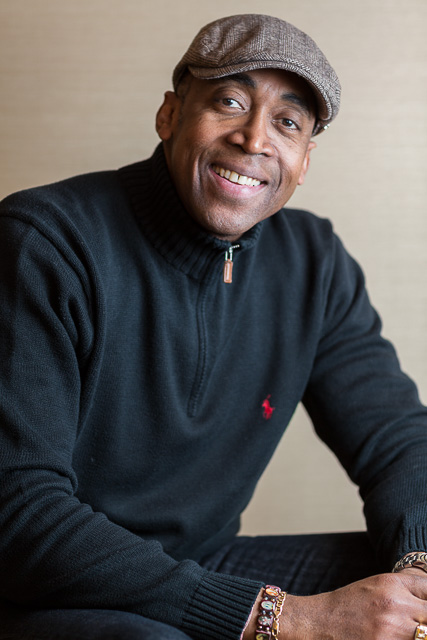By Glenville Ashby
“Dying has a funny way of making you see people, the living and the dead, a little differently. Maybe that’s just part of grieving, or maybe the dead stand there and open our eyes a bit wider.” (Susan Gress Gilmore)

Most of us have lost loved ones. It is a painful experience that sometimes takes years to heal, if ever. Many depart suddenly without notice and we are left helpless, forlorn and confounded.
Others waste away, a slow process that is painful, difficult to watch. We are called upon to be caregivers, attending to the every need of a dying relative. During that time we learn timeless lessons if we are patient, listen, and learn from this unique experience.
Like birth, death is an integral part of life that should be accorded the right, appropriate response. On a mystical level, the dying person experiences what hospice nurse Maggie Callanan calls the “Nearing Death Awareness”.
It is a process that can take days, weeks and even months; but during that time we are afforded unique information that will help us in our own spiritual travels when we are called home.
Callahan concluded in her cross-cultural research that dying persons speak of travel, maps, trains, and of queuing up to get to another place. She also found that those she studied were not heavily sedated, nor were they speaking in fantastical terms due to any neurological, physical or physiological handicap.
In her book, Final Gifts, she writes, “… we found no common cause for what we were seeing and hearing. Our patients had many different illnesses – varieties of cancer, AIDS. In some cases, their brain oxygen, body fluid and body salt levels had been documented as normal.
“Their medications varied widely, some were taking no drugs at all, others many. In short, there was no apparent physiological explanation for their communication patterns.”
Dismiss the disjointed
Unfortunately, we sometimes dismiss the disjointed, and seemingly incongruous and incomprehensible words of the dying person, attributing it to medication, dementia, or senility.
Confused, we ask the nurse or doctor to take the appropriate medical measures to quiet the patient. Somehow, we miss the mark, missing the opportunity to ease the concerns and burdens of the patient.
When we can decode what the patient is trying to say and ably respond, we have facilitated the process of transition (dying). Patients get agitated or resigned when they are not understood. The dying process becomes longer, even more tortuous as the patient struggles to convey a message or articulate a concern.
Studies have shown that dying persons will opt to leave this earth when they are satisfied that those they are leaving behind will be all right. Others protract their departure because of guilt and the need for reconciliation. They seek forgiveness for past wrongs.
Mountain of experience
A mountain of experience has taught Callanan that many dying persons want to settle personal issues before they leave. They have a thirst for closure. “(There’s) an awareness that they need to be at peace,” Callanan writes in Final Gifts.
“As death nears, people often realise some things feel unfinished or incomplete perhaps issues that once seemed insignificant or that happened long ago. Now the dying person realises their importance and wants to settle them.” We are urged to accommodate their request.
Sadly, many engulfed in the throes of dying do not and cannot speak in literal terms. They use symbolic language.
And the more we dismiss this mode of communication as insignificant, muddled thoughts, the more the patient is likely to withdraw or display bouts of anxiety. In such situations dying is painful to watch.
On the symbolism used by dying persons, we are advised to patiently learn as much as possible and be gently and constructively responsive.
Sometimes our own fears, bewilderment and anger at seeing a loved one die only exacerbate the circumstances. We withdraw, unable to openly and honestly communicate.
Friends, unable to manage their own emotions, and lost for words, do not visit not out of insensitivity, but due to their incapacity to comprehend and deal with this highly charged emotional experience.
Studies have also shown that those at the cusp of death may see and communicate with beings invisible to us.
These visitors are usually relatives and friends who have passed on, or angels, saints and religious personages that are familiar to the patient. These visions have a calming effect and it’s obvious that these exchanges serve to make the dying process peaceful and unthreatening.
Finally, hospice nurses have encountered cases indicating that patients ‘know’ the hour of their death. Others have cited cases where healthy individuals also seem to know of their demise.
In one intriguing scenario with which I am familiar, a physically robust woman, without any prodding, suddenly rushed to prepare her will and last testament. Upon completion, she hastily summoned her son, imparting every bit of religious knowledge.
“This is the most precious gift I can give you,” she told him. She succumbed a day later.
That she consciously knew that she was going to die is debatable, and I disagree with Callahan and others who argue that “dying people often seem to know when their death will occur, sometimes right down to the day or hour (and) their attempts to share information about the time of death may be clear and direct”.
However, I am of the opinion that in most cases this knowledge is a subtle, subconscious impulse unknown to the conscious mind.
Nearing Death Awareness can be taxing, taking a toll on patient and loved ones. Openness, dialogue, honesty, patience and caring by all parties will no doubt ease the burden.
Dying and death are natural, a necessary part of life. And in the same way that we learn from the living, so we must embrace the wisdom brought forth by dying people.
Complete Article HERE!
